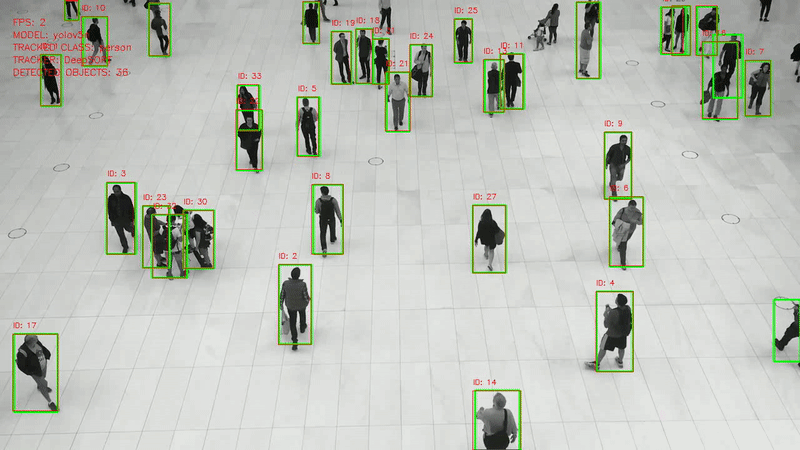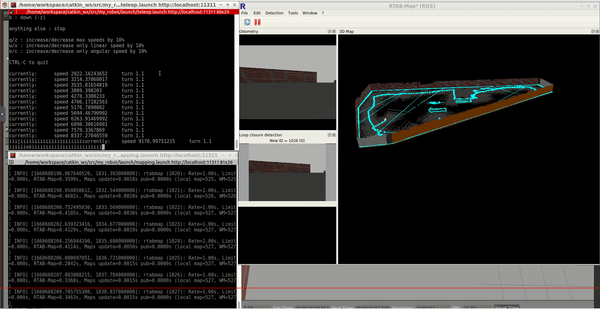PROJECTS
The projects documented below are a consolidation of my current work and projects spanning over the past 10 years. I have worked on these during my free time apart from my day job and university studies. If you have any queries regarding any of my past projects or would like to collaborate with me on any of my current projects, feel free to contact me !
LIVE PROJECTS
Master Thesis: Explainable Multimodal 3D Object Detection for Autonomous vehicles

Safe and effective autonomous vehicles rely heavily on advanced multi-modal perception systems. This thesis proposes the development of such a system, with a focus on explainability. The goal is to understand the system’s reasoning behind its predictions and to enhance its interpretability for various stakeholders.
Detection using transformers can capture global context using the attention mechanisms. These architectures not only provide more concise detection results, but also allow to extract the attention weights as source of explainability. The basis of this thesis are an existing transformer-based 3D object detector for LiDAR point clouds and existing 2D object detectors for multi-view cameras.
I will be adding more details during the course of the thesis.
Domain Adaptation for Lidar Object Detection in Autonomous Vehicles

Labeling of suitable datasets for supervised
learning is usually associated with a lot of
(manual) effort. It is desirable to make the most use out of publicly available datasets. Careful application of data augmentation, domain adaptation, and hyperparameter tuning techniques has the potential to
improve generalization capabilities to new
domains (e.g. different sensor setup)
The aim is to develop a methodology which
optimizes a neural network for lidar object
detection trained on public datasets with regard
to its predictive performance on data affected by
domain shift.
COMPLETED PROJECTS
TerraWatch: Multimodal AI for Deforestation Detection

Deforestation has become one of the leading causes of environmental problems around the world. With the application of vision models on satellite imagery, detection of deforested areas have become easier, however identifying the environmental effects and the causes are still a challenge.
TerraWatch combines computer vision with multimodal LLM models to detect deforestation from satellite images and predict their causes and possible environmental effects.
This was a prototype that was built in 48 hours during the TUM AI Hackathon 2024. Further contributions are welcome.
Stereo Visual Odometry using KITTI Dataset

Deforestation has become one of the leading causes of environmental problems around the world. With the application of vision models on satellite imagery, detection of deforested areas have become easier, however identifying the environmental effects and the causes are still a challenge.
TerraWatch combines computer vision with multimodal LLM models to detect deforestation from satellite images and predict their causes and possible environmental effects.
This was a prototype that was built in 48 hours during the TUM AI Hackathon 2024. Further contributions are welcome.
Sokrates - AI Ideation Assistant for the Automotive Industry

Identifying valuable use cases for AI implementation in the industry is a complex and time-consuming process that often requires extensive domain expertise and resources. Many companies, especially in the German Mittelstand, are lacking the resources for AI consultancies and do not have access to relevant domain experts. Sokrates is a prototype of a conversational AI assistant that has been developed in order to democratize AI access for SMEs.
This prototype was made during the TUM AI Makeathon held at the Technical University of Munich from April 28 - May 1 2023.
Object Detection and Tracking using YOLOv5 and DeepSORT

This project is an open-source implementation of a real-time object-tracking system based on the YOLOv5 and DeepSORT algorithms.
This project aims to provide a solution for object tracking in videos, with the ability to track multiple objects simultaneously in real time.
The YOLOv5 model is used to detect objects in each frame, and then the DeepSORT algorithm is used to track these objects across multiple frames and associate them with unique IDs.
The project is implemented in Python using the PyTorch deep learning framework.
Robot Localization using Adaptive Monte Carlo Localization Algorithm

The Adaptive Monte Carlo Localization (AMCL) algorithm has been implemented using the ROS AMCL package to accurately localize a mobile robot in a Gazebo simulation environment.
The algorithm has been tested using the 2D Nav Goal option on RViz as well as through the keyboard commands using the teleop node
CIRCLE: An Opensource Parallel Manipulator

Circle is an open-source parallel manipulator robot that is designed to also act as a stabilization platform.
Circle can also be interfaced with other robots. For example, integrating it with a robotic arm to combine the dexterity and work volume of a serial manipulator with the rigidity and stabilization features of a parallel manipulator.
MODULUS X : A 3 Axis Milling Machine Concept

Modulus X is a concept of a 3 axis robot designed for research labs and prototyping centers. The design is an extension of the Modulus 1 robotic platform and aims to enhance various abilities and functional capabilities.
Ease of use has been the main driving factor while designing this system. This was designed in collaboration with the department of design, IIT Guwahati, and is part of the Strange Matter series of projects.
MODULUS R: Robotic milling machine for GFRP enclosures

Modulus R is a 3 axis gantry robotic system designed to cater to the needs of manufacturing companies dealing with the machining of large GFRP electronic enclosures for solar farms.
The robot was developed on top of the Modulus 1 platform. This robot is capable of machining boxes up to 1.2m in height.
The robot was developed in collaboration with a local industry partner and intensive tests were conducted in order to ensure IP 65 rating of the GFRP boxes post-machining.
Wind Powered Robots : ABU Robocon 2015

A pair of robots was developed in order to execute the task of autonomously traversing a fixed path with significant elevations and slopes. Of the two, wind power was solely used to propel one of the robots while the other robot provided the carefully directed wind.
These robots were developed at Robomanipal, which is the official robotics team of MIT Manipal, India. We represented MIT Manipal at the 2016 ABU Robocon held in Pune, India.
Badminton Robots : ABU Robocon 2014

A pair of badminton playing robots were designed and developed to compete in badminton matches between robots.
The robots were designed to have holonomic motion and the badminton shots were pneumatically actuated.
The robots were developed at Robomanipal which is the official robotics team of MIT Manipal. We represented MIT Manipal at the 2015 ABU Robocon, held in Pune, India.

